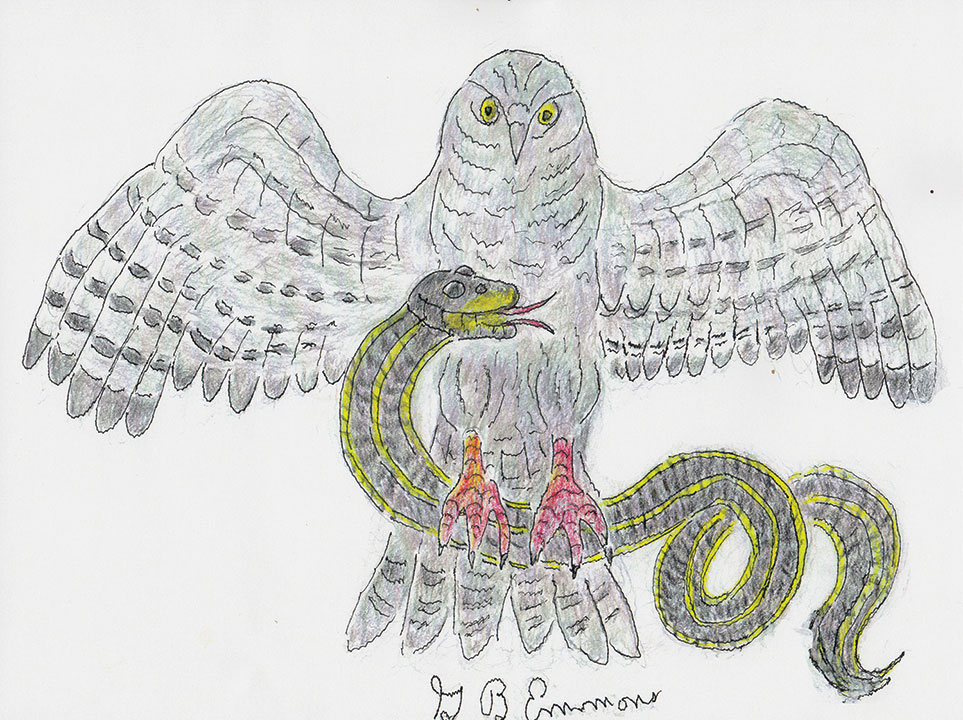The northern harrier is quite different in appearance and behavior than any other bird of prey. Yet to many birdwatchers, at first appearance it looks very much like the common marsh hawk, but its upper body plumage is distinctively a more gray-colored shade. It also has an easy to identify owl-shaped head and face that funnels the faintest sound directly into enlarged ear openings. Consequently, it can hear even a small mole rustling around in the grass long before it comes into view.
A harrier also has very long, black tail and wing tips that stabilize a slow and feathery quiet flight path to be able to turn on a dime to drop on a slow and unsuspecting target. Using this aerial ambush, it catches small rabbits, frogs, young birds, and often snakes, as in my illustration.
When you are birdwatching to recognize harriers in your neighborhood, they are more likely to be found hunting low along the edges of country roads, and sometimes eating what they have caught on the ground in plain sight for everyone to appreciate. Harriers are only occasional residents of coastal Buzzards Bay because of seasonally migrating down from the north, for which they are named.
Like the snowy owl, they may appear more every five or six years in exodus of a cyclical downturn in numbers of their staple diet of rodents and lemmings. Unlike most other aerial raptors that mate for life, unless one of a pair dies, the male harrier can be polygamous with several mates all at the same time.
His courtship dance to each female is remarkably acrobatic. As he circles his intended partner in the air, he may call out to her with a “purrduk,” signaling he has caught a prey so she should fly under him and, when he drops it, she can catch it as her reward for the mating exhibition.
The male also uses a similar dropping tactic when finding a mouse nest to feed his fledglings. He will pick it up and shake it over the hungry family for a quick snack into the open-wide mouths of those down below him. This teaches them to similarly hunt for themselves by dropping down upon any moving object that looks like a living creature that is perhaps edible. But if a youngster wanders too far from the nest, the mother carries it back home by the nape of its neck.
In late August, the whole family is ready to start moving southward for the annual autumn seasonal migration. For the next several months, they are found to follow the coastal plain areas not far from the Atlantic flyway. However, wherever they arrive in their travels, they are received as welcome visitors, recognized for their reputation to keep down the population of unwanted rodents as well as reptiles venomous to human beings.
But population research shows harrier numbers are dwindling all across their migration range because of loss of marshland habitat and spraying of pesticides harmful to the thickness of hatching eggshells.
The Migratory Bird Treaty of 1918 still protects the northern harrier as a valuable species for me to write about and illustrate for environmental awareness to readers of The Wanderer.
By George B. Emmons
